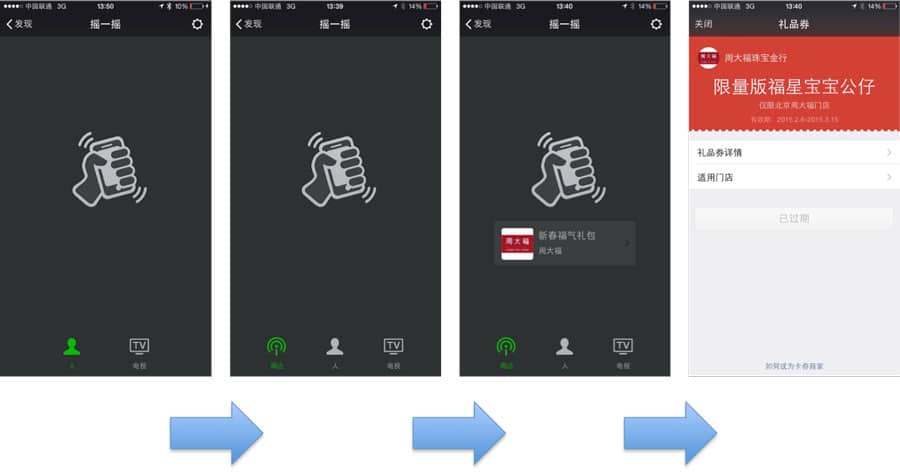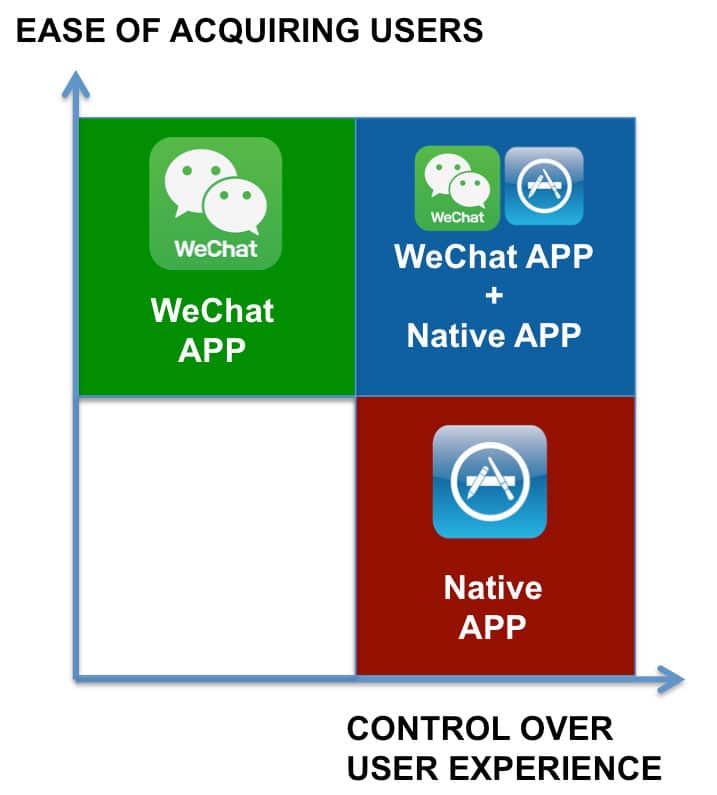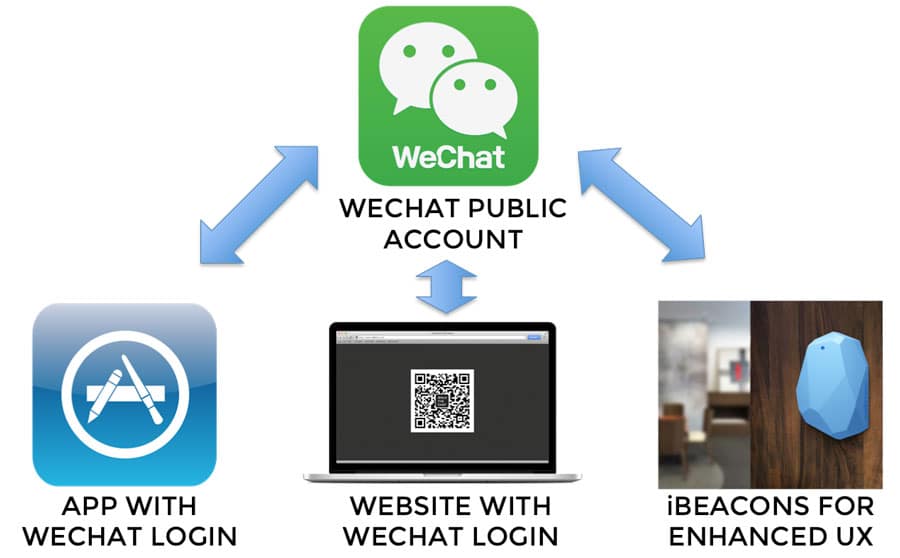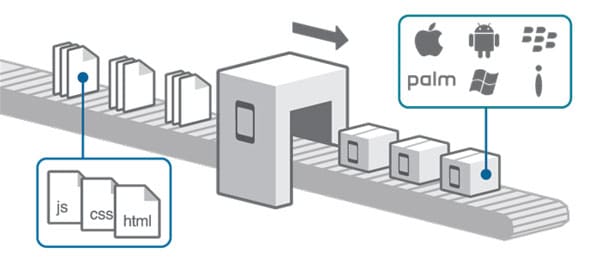A few months ago, Tencent pushed heavily connected objects to its platform. In an attempt to achieve the much-desired “O2O integration”, it unveiled new features such as a special “shake” feature enabling to access content from nearby connected objects.
Yet, iBeacons just do not take-off in China, and it is mostly because of Tencent’s choices.
What are iBeacons?
iBeacons are super-accurate location devices. They enable to locate users in a range as short as centimeters.
The way it works is by sending frequent bluetooth signals which are received by nearby devices. This enables to know which devices are in the direct proximity of an iBeacon, and if you have 3 iBeacons on more around, you can triangulate the user exact position.
Why can iBeacons be extremely useful?
iBeacons can bring higher level of interactivity and interactions to offline experience.
Art institutions such as the Brooklyn Museum digitised the visitors experience by enabling them to get informations on their smartphone of artworks in their direct surroundings.
Disney took the experiment one step further, by giving all their visitors a digital wristband which enable to customise all their journey in the park: they get welcomed by their name when they cross a bridge to the restaurant. Once they arrive, their order is already ready. And all of this is possible thanks to iBeacons super-accurate location technologies.
What about WeChat iBeacons?
All of the above sounds exciting. So what happens if we combine this exciting new technology with the largest social network in China, which also happens to belong to one of the most innovative tech companies in the world.
Unfortunately, not much.
Tencent limited the use of connected objects to the shake function. Which means that all you can do is shake your phone to access web-pages of WeChat iBeacons in your surrounding. No real-time location, no push notifications, none of the immersive experience enabled by iBeacons.
But maybe a real-life example would convince you a bit further.
Zhoudafu (周大福), a good bad use-case of iBeacons
In order to study in more details the potential of iBeacons in China, we can consider one of the biggest deployments of WeChat iBeacons in China: the jewellery brand Zhoudafu.
The experience is rather unintuitive: upon entering the shop, you have to open your phone and check the “shake” function of WeChat to realise a new icon appeared. Once you noticed this icon, you can shake your phone, wait for 5-6 seconds before clicking a page which will finally take you to a discount.
Nothing a QR-code couldn’t have achieved way more easily and intuitively for Chinese users.
Even worst, the staff in the Zhoudafu shops seems not to promote the discounts available through the shake function. Actually, many of them seem not to be aware the “WeChat iBeacons” function is even available for customers.
The way forward: web-APPs
This is not to say that we should disregard iBeacons in China. iBeacons and connected objects are soon going to invade our life, and O2O is going to be a key challenge for both new and traditional businesses.
Yet, WeChat is everything in China’s digital social scene, and it is not providing any leverage for iBeacons. So how to transcend this contradiction?
The answer is simple: WeChat should be seen as a conversion channel, not an end in itself. Your WeChat users are easier to acquire than APP users, but they are not yours: they are Tencent’s users. A long-term WeChat strategy involves conversion to an APP.
Once users will be using your APP, you will be able to provide them with customised experience, more push notifications, and complete geo-location via iBeacons.
One APP to link them all
So is WeChat simply a conversion tool?
Not exactly: it is also the glue which links all your user profiles.
By using WeChat login on your website, WeChat login on your APP and by having an active community of WeChat followers, you will be able to track users data across all of these platforms. You will know that the user who read your article is the same who joined you article, later visited your website, installed your APP a week later, and walked past some of your iBeacons the next day.
What about the cost?
The idea of developing a new native APP on top of an advanced WeChat website can seem daunting even to established companies.
Fortunately, a technology is here to help you: PhoneGap.
PhoneGap is a free and open-source framework, acquired by Adobe and then donated to the Apache foundation. Their technology is revolutionary: they enable to transfer web code (HTML5, JavaScript, CSS) into native-looking APP’s which can be downloaded on the Apple, Google and Windows stores.
In summary: you simply have to develop a single APP for all of your platforms, including WeChat. This web-APP will be built on only one code base, one back-end, and you will be able to update and develop it directly across platforms at a minimal cost.
Use your WeChat website to give a taste of your offer to your followers, and provide them incentive to download your APP to see more. Use WeChat to connect all this data together, and make the most of iBeacons which you can now leverage for your web-APP users.




